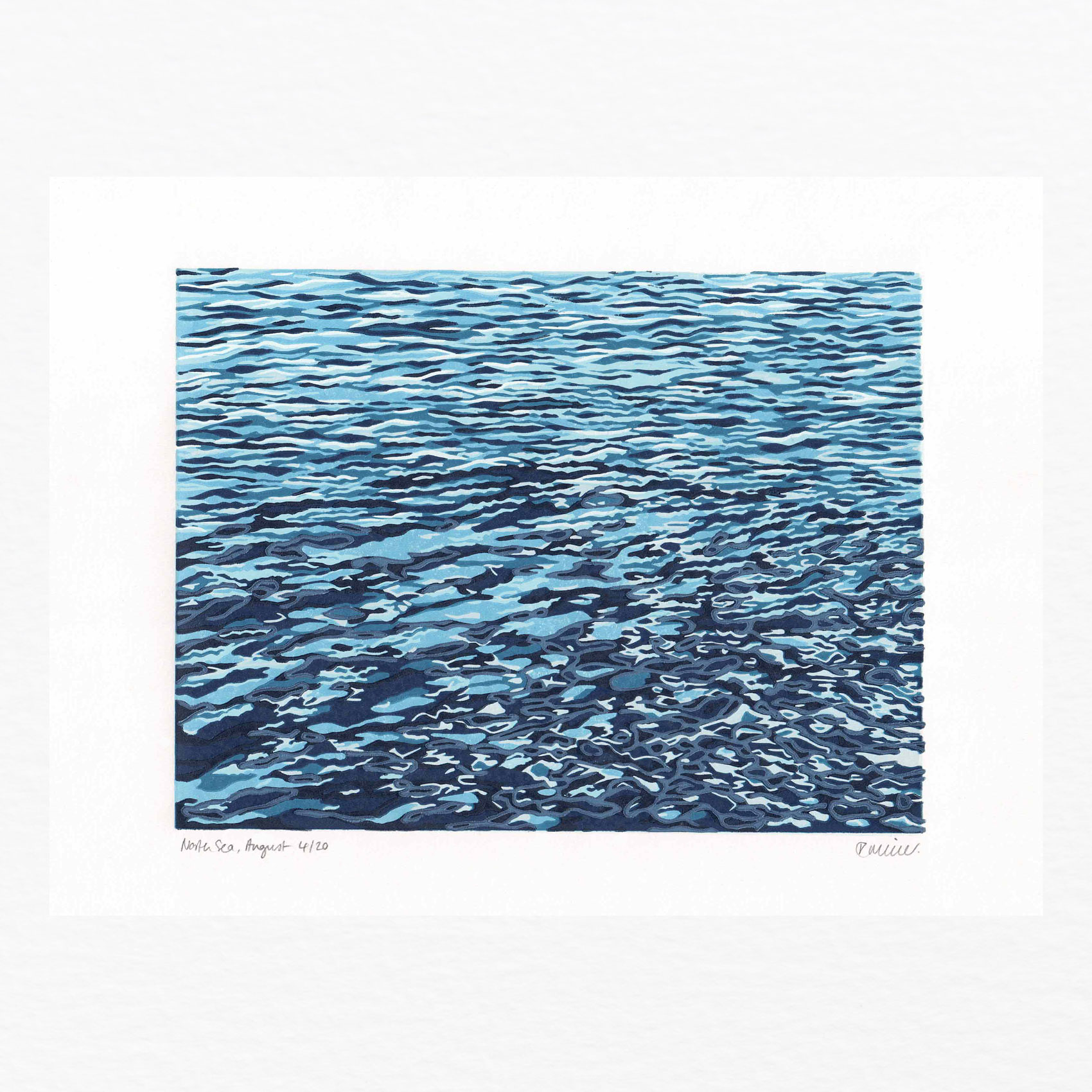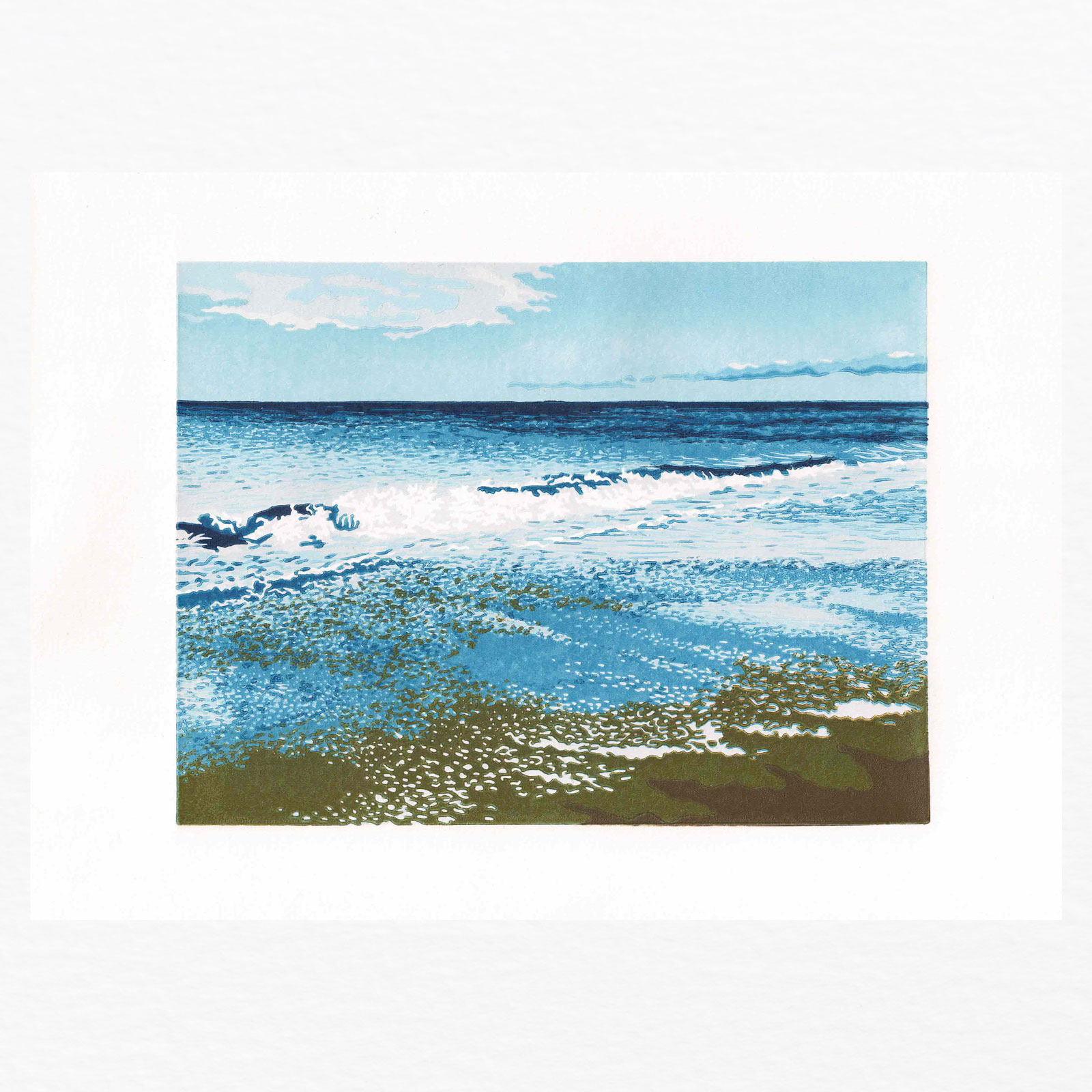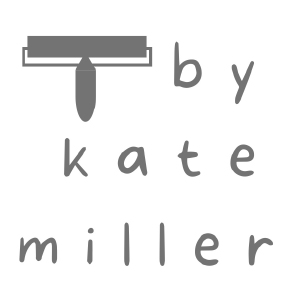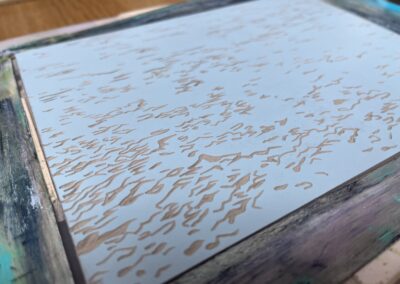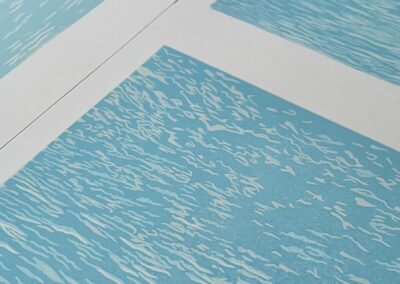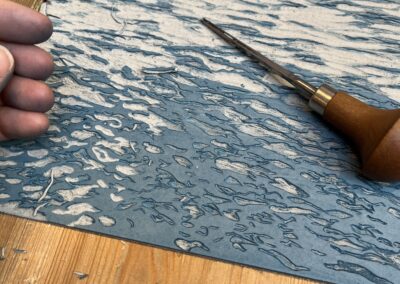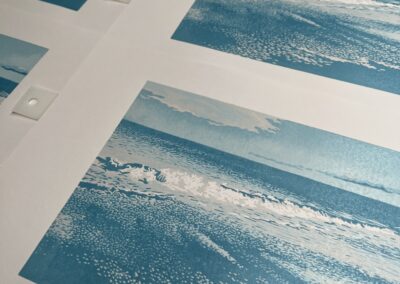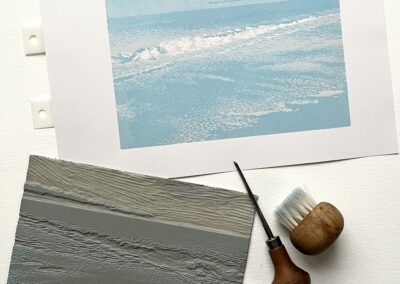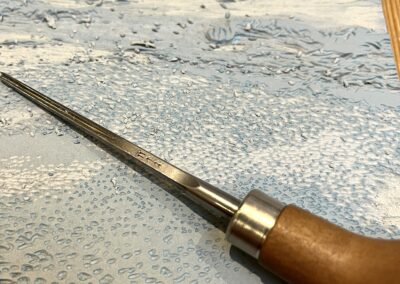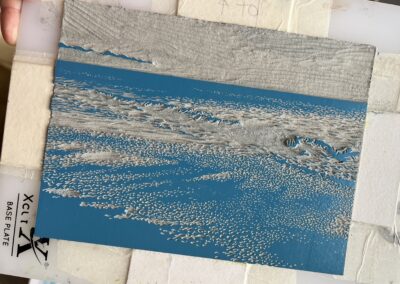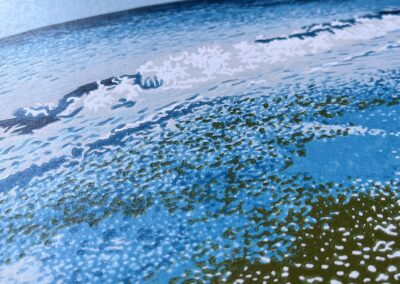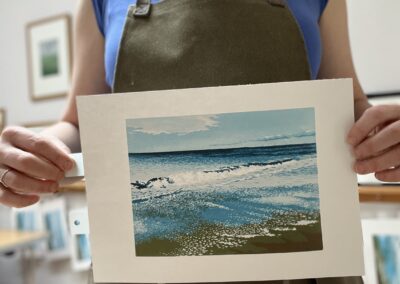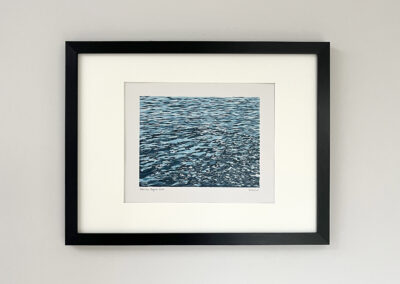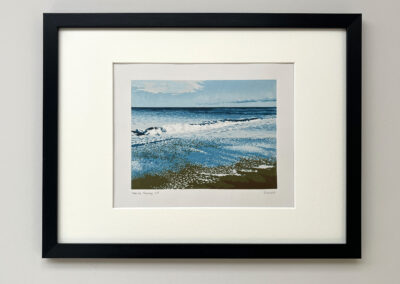It’s a huge privilege to live near the coast. Once you’ve experienced it, it’s very difficult to move away. Whether you like to swim, surf or just walk along the beach, it’s an addictive presence. One of my favourite things to do is to take a long walk along a beach after a storm and see what the sea has thrown up. There’s always something interesting to see – shells, pebbles, seaweed, driftwood, weathered sherds of brick and ceramic, seaglass and all sorts of creatures too. It doesn’t matter how many times I return to the same beach, I’ll always find something different.
For a while, I’ve been making prints of some of my favourite places in the northeast, and these will often be coastal locations. This means that views of the sea feature in a lot of my prints. But the sea is a ubiquitous presence for so many people in so many places, and I wanted to start work on a series of prints which celebrates the sea itself, with no reference to a specific location.
I have a huge collection of photographs of the sea, so it wasn’t difficult to find a selection of images which I thought would work well as linocut prints. The reduction method lends itself brilliantly to using different shades of the same colour so I was optimistic about the results. The first print I made is North Sea, August. It’s a celebration of light dancing on water and was a joy to cut – although the earlier layers were meticulously traced and copied, the later layers could be free cut, which was such an enjoyable process. Although I usually always work from light to dark, the final layer in this print is a mass of silvery squiggles, which brings the whole piece to life.
The second print is North Sea, January. Although the initial photograph was taken on a freezing cold, blustery day, the sky was bright and clear and the blues of the sea were electric. In this print, I’ve included the beach, sea foam and sand, so working out the colours and layers was much more complex. I used tiny cutting tools to depict the speckles of foam which can be seen in and on the water surface.
There are around 12 normal layers on this print, but I added several more ‘tweaking’ layers, where I was playing mainly with the sky, adding blends and lightening areas with extended pale ink. Both prints are made using the reduction method, where I cut and recut the same block, printing smaller areas each time and building up the colours from light to dark. In North Sea, January, I printed all of the sea and sky before turning my attention to the sand in the foreground.
Here are the finished prints, both of which were printed in small, limited editions of 20 and 18 respectively –
